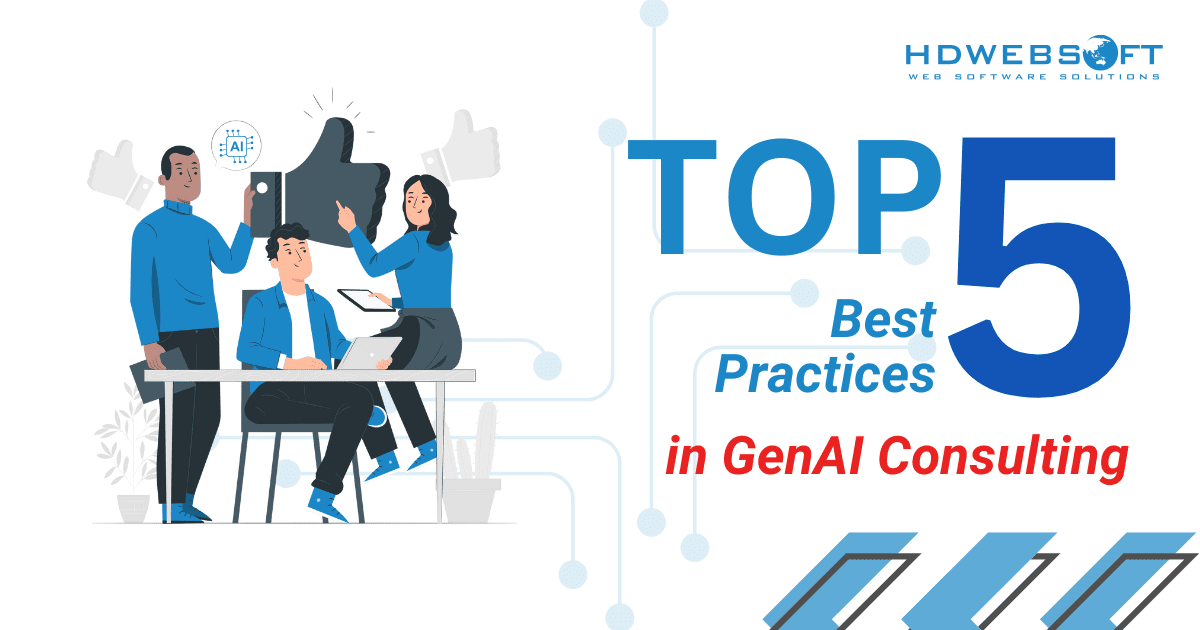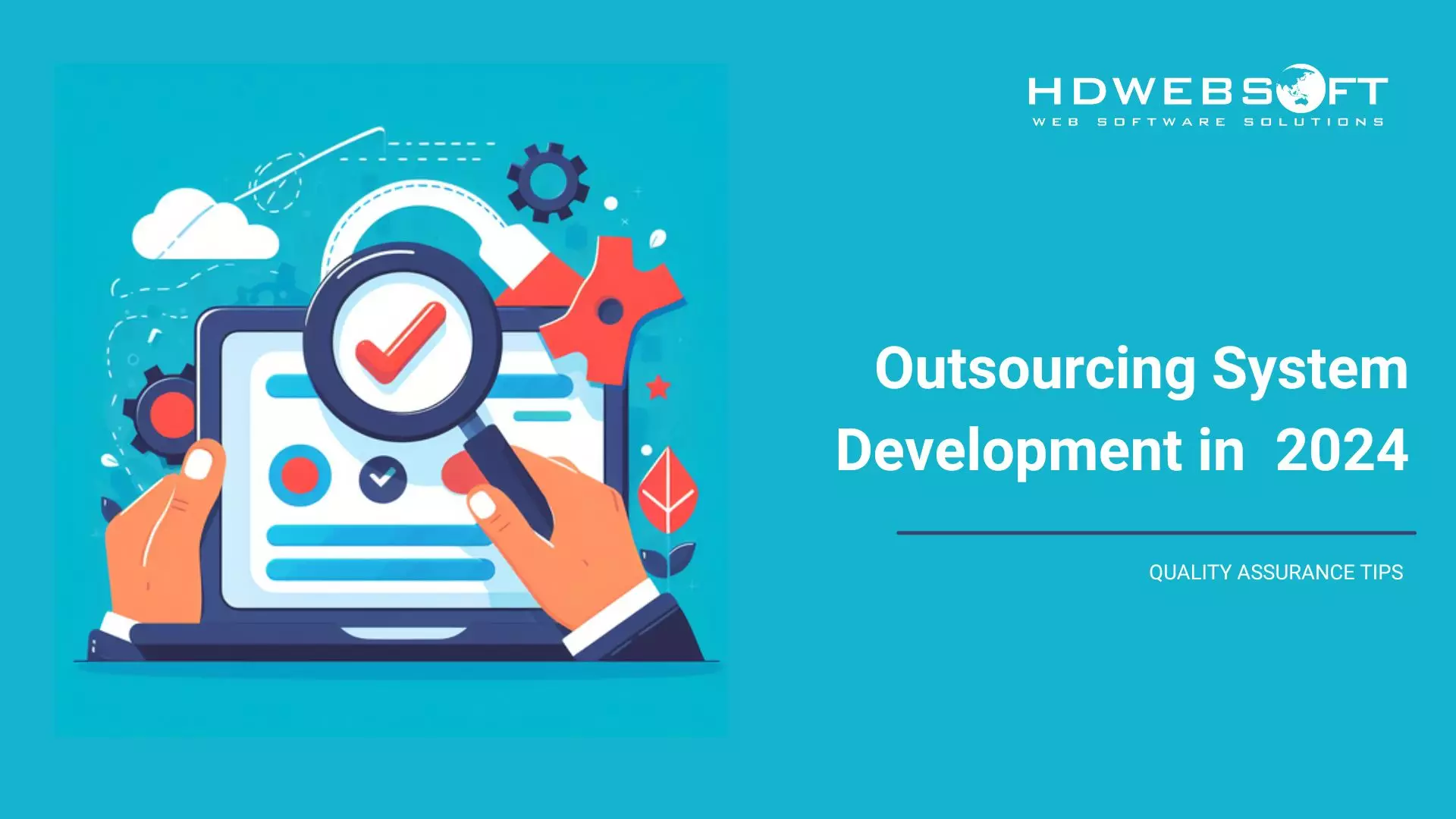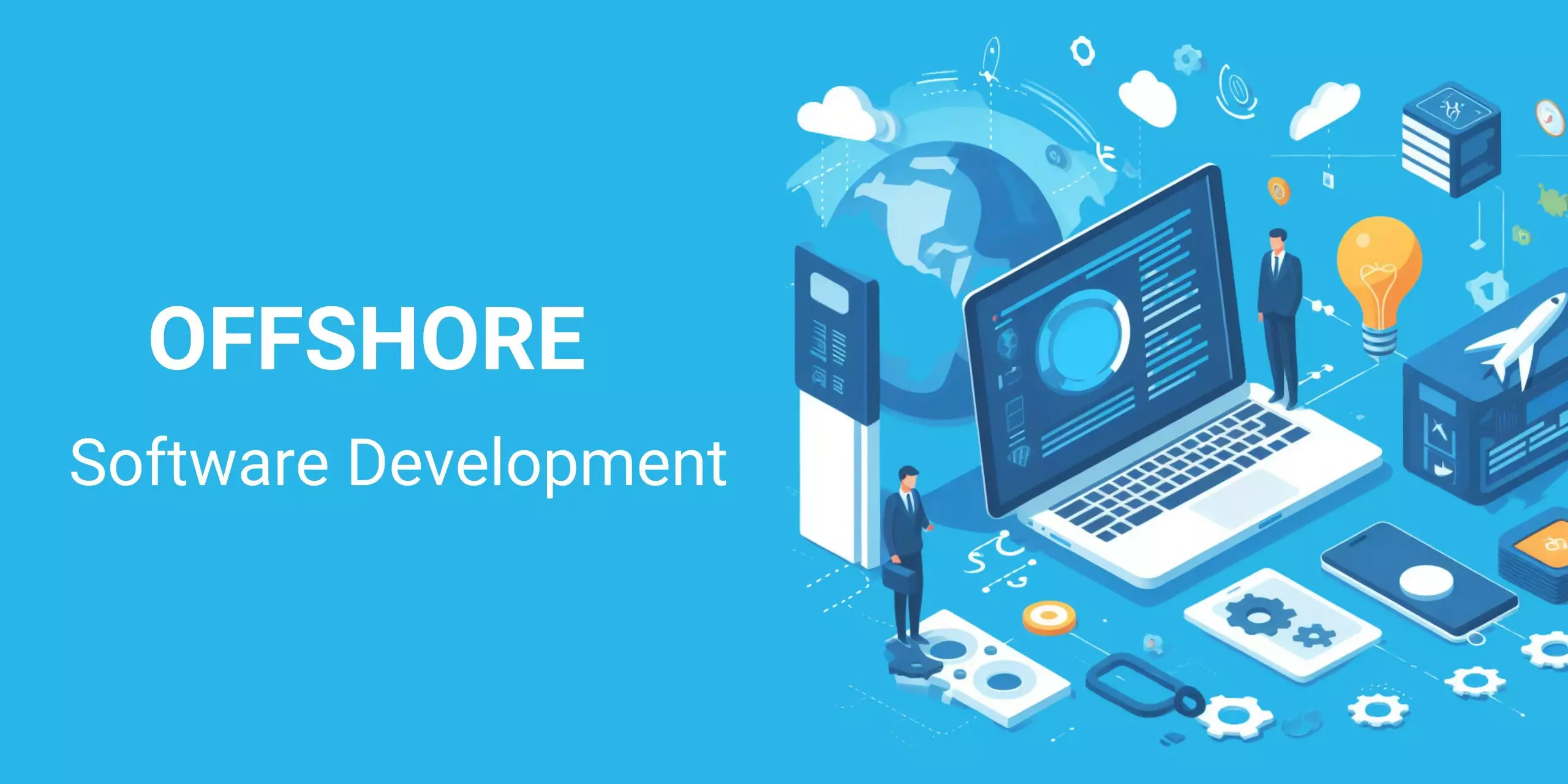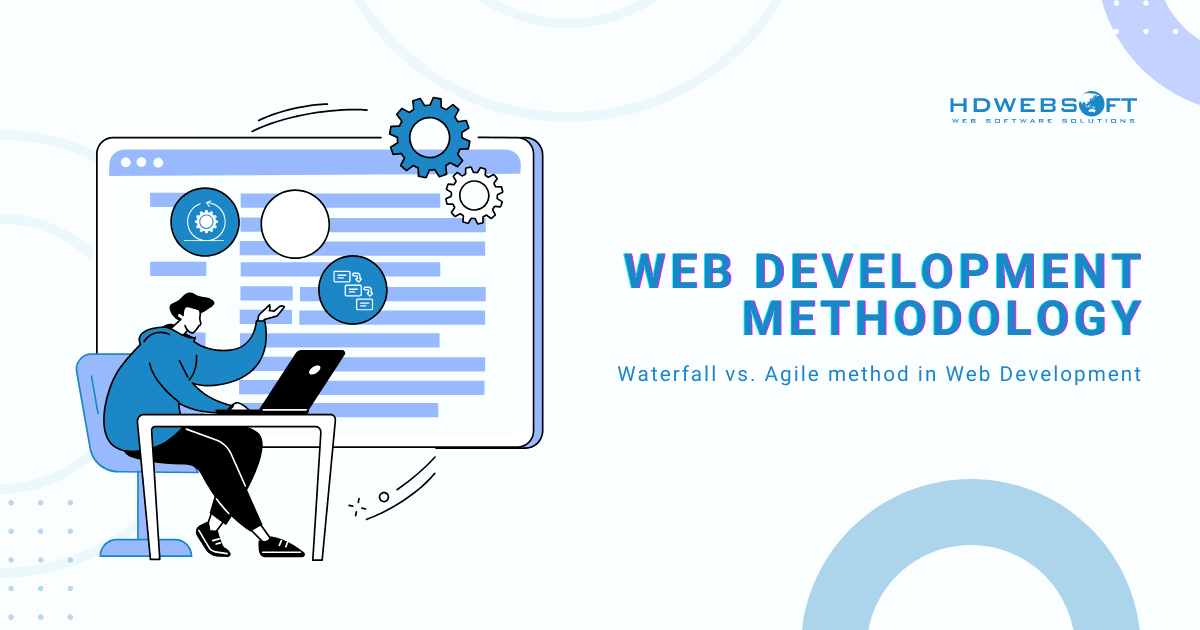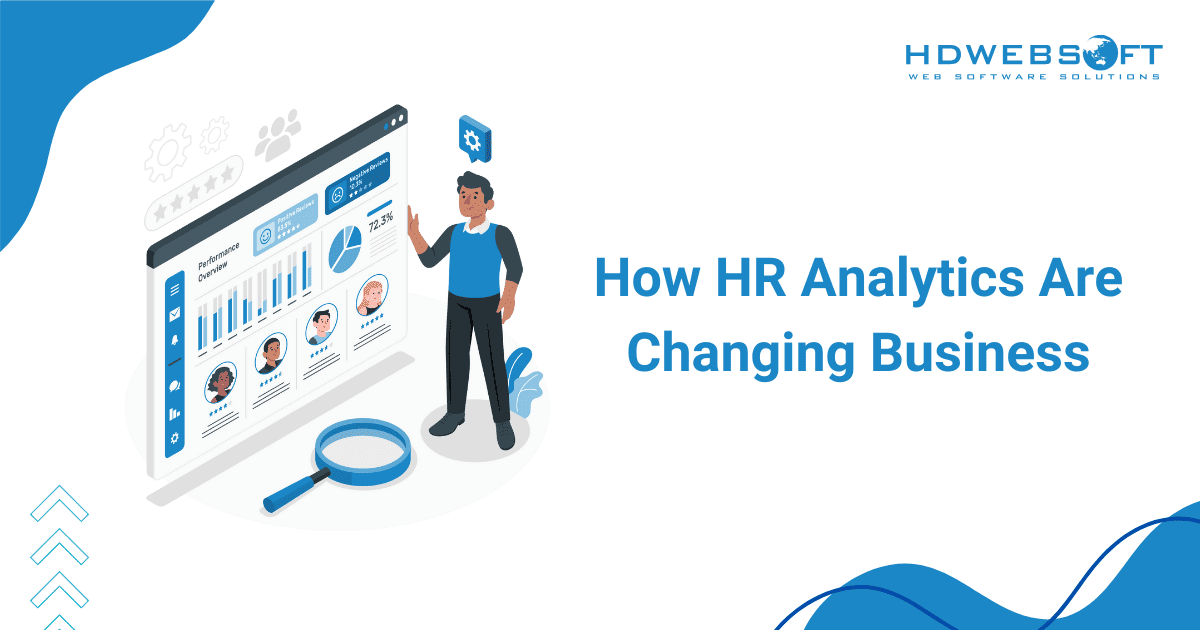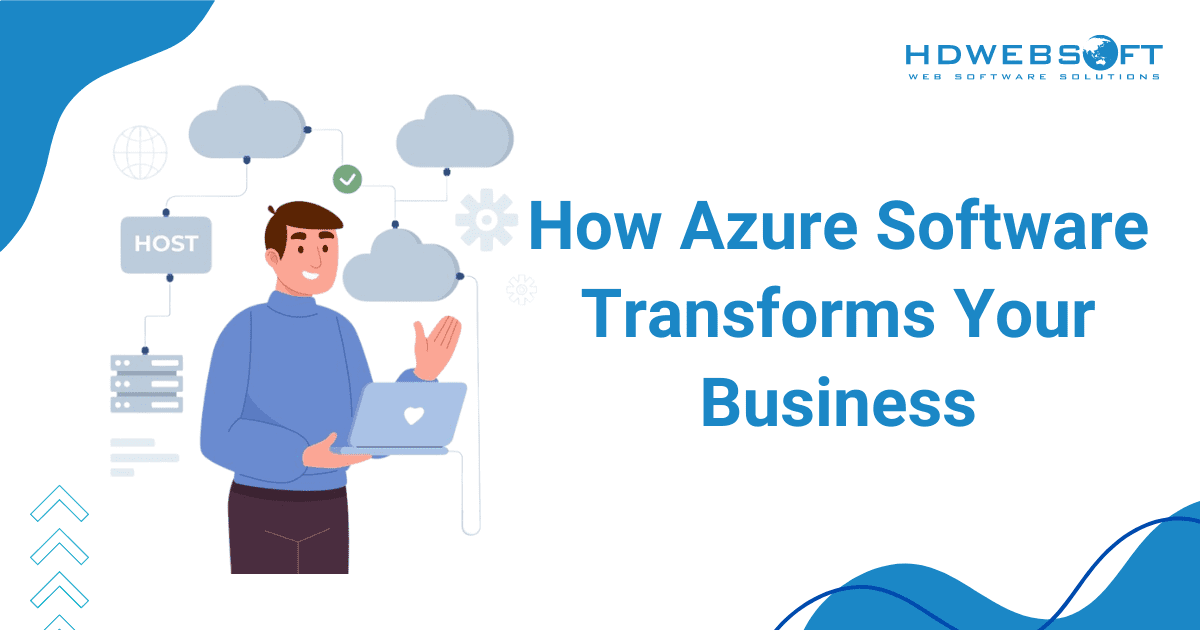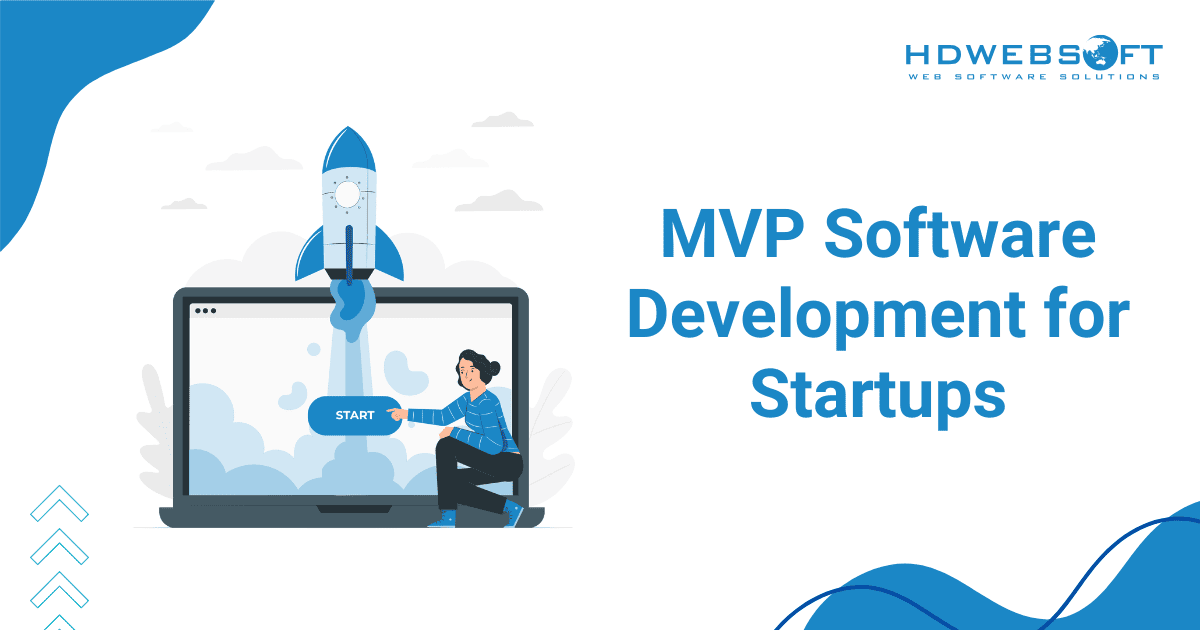
MVP Software Development: What, Why, and How?
MVP software development is essential for launching a successful startup, especially in the early stages when budgets and timelines are limited. This approach enables startups to create a Minimum Viable Product with just enough features to satisfy early customers. By then, they can gather user insights and iterate based on feedback, which significantly enhances their chances of success.
In this blog, we’ll discuss MVPs, their benefits for startups, and the sourcing models. While we’re at it, HDWEBSOFT will provide you with the knowledge of development strategies and tips for getting started.
What is an MVP Software Development?
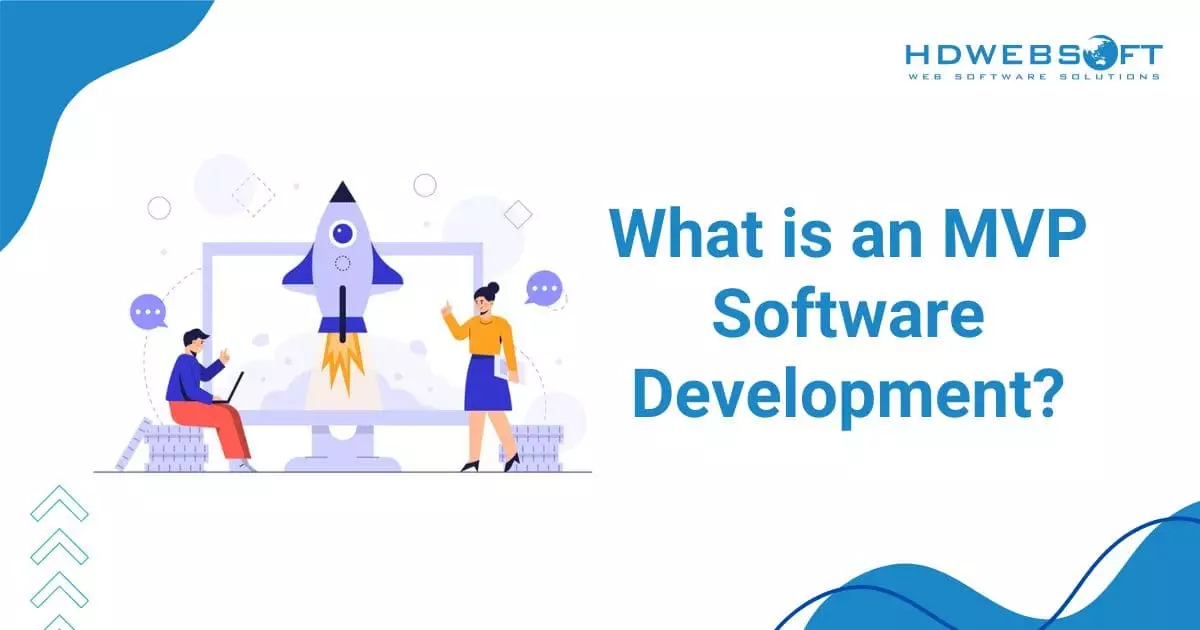
MVP software development involves creating a product version with only the core features necessary to solve a specific user problem. The idea is to get the product to market as quickly as possible to test assumptions. Moreover, it’s for understanding better what users truly want without committing substantial resources.
Unlike a prototype, an MVP is usable and provides value, allowing startups to measure interest and gather feedback effectively. Once the MVP is launched, startups can analyze user data, iterate, and improve the product based on validated learning. As a desired result, it significantly reduces the risk of failure.
MVPs are especially valuable for startups looking to validate their ideas. Research indicates that 14% of startups fail because they misinterpret market needs. By focusing on core features, startups avoid the risk of over-investing in a product before validating its demand. This lean approach means that rather than a full-scale launch, MVP software development is refined and shaped by real-world insights. Thereby, it helps minimize development costs and optimize market fit.
Finally, once feedback is gathered, startups can confidently iterate, add, or refine features based on user needs. Ultimately, you are able to build a stronger, more user-focused product.
The Benefits of MVP for Startup
MVPs offer numerous benefits for startups by helping them quickly test ideas, validate assumptions, and enter the market with minimal investment. Here’s why adopting an MVP approach is so advantageous for early-stage businesses.
Faster Time-to-Market
One of the most significant advantages of MVP software development is that it allows startups to get a product to market quickly. Instead of waiting months or even years to perfect a full-fledged product, an MVP focuses on essential features. Hence, this is why startups are able to launch in a much shorter timeframe.
Moreover, this accelerated entry into the market means startups can gather user feedback and respond to it sooner. For that reason, the product can be kept aligned with market demand. Furthermore, in competitive spaces, speed can be the difference between success and failure. Getting the MVP out fast allows a startup to capture early adopters before competitors do.
Cost Efficiency
MVPs are designed to be lean, avoiding unnecessary features that can consume time and resources. This approach significantly reduces initial development costs, allowing startups to conserve budget for future updates based on validated learning. According to a report, 74% of startups fail due to premature scaling and overspending before they’re fully established.
With MVP software development, startups only commit to core features initially, which keeps costs low and minimizes financial risk. Instead of investing in untested features, funds can be allocated where they’re most needed. By then, they will be used to support a sustainable development cycle as the product matures.
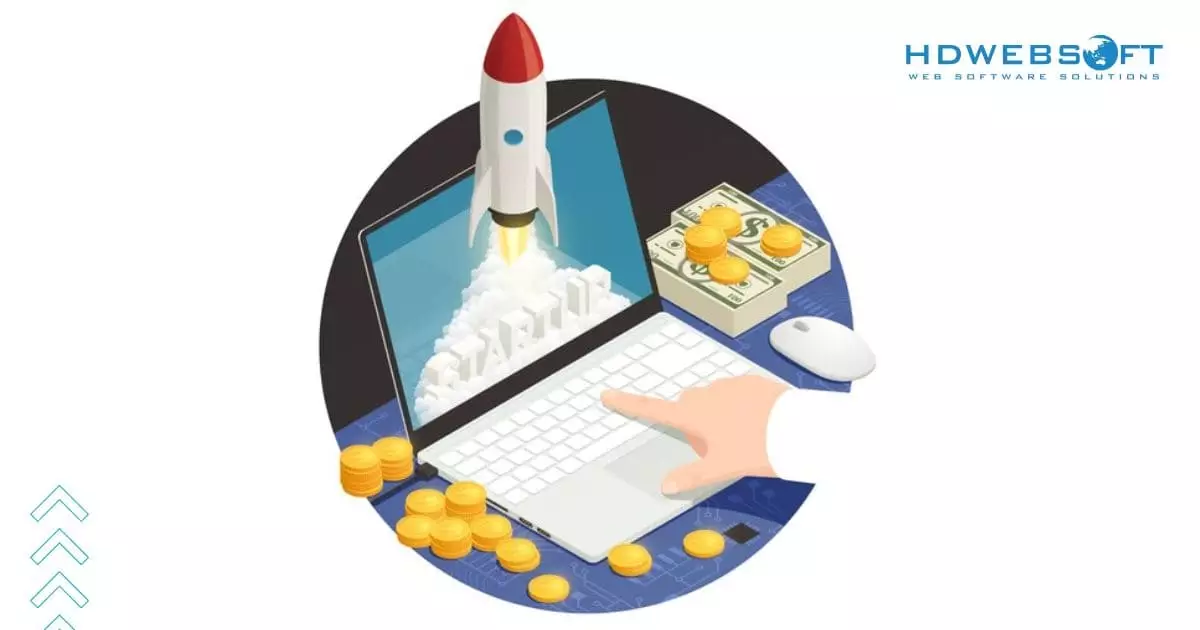
MVP software development should provide startups with cost-efficiency since they lack budgets and time on their hands.
Opportunity for Early Revenue
An MVP allows startups to begin generating revenue sooner. By focusing on essential features and launching a functional product, they can begin onboarding paying customers. Consequently, this brings in early revenue to support future development. This revenue can be reinvested in refining and expanding the product, so it’ll create a self-sustaining growth cycle.
For startups with limited funding, early revenue is a crucial lifeline that helps them remain viable as they continue iterating on the product.
User-Centered Product Development
MVPs enable startups to engage with real users from the beginning. By launching with essential features only, startups can receive early feedback on what users like and what they find challenging. This feedback loop is invaluable because it provides insight into real-world needs and preferences, which can differ from initial assumptions.
With MVP software development, startups can avoid the common pitfall of building features based on assumptions. Instead, this approach ensures that every new addition aligns with actual user demand. Eventually, businesses can create a product that better meets its audience’s needs.
Read more: User-centric Benchmark Testing for Business.
Investor Appeal
For many investors, MVPs represent a crucial milestone. Having an MVP demonstrates that a startup has taken a strategic, lean approach to development. Furthermore, it shows that the product is backed by real user feedback.
When a startup can showcase a viable product with active users, even if it’s basic, it boosts investor confidence. This evidence of traction can lead to increased funding opportunities, which are essential for continued growth.

Investors are more likely to invest in a startup when they can see the potential and positive feedback from the target audience.
Reduced Risk and Flexibility
Launching an MVP minimizes risk by testing the concept in the real market with limited investment. If an idea proves less viable than expected, pivoting is far easier with MVPs than with a fully developed product.
In fact, flexibility is one of the core principles of MVP software development. Startups can pivot based on user feedback and market trends without the burden of sunk costs in unnecessary features. Likewise, this flexibility allows for adapting to changing conditions, increasing the chances of building a product that thrives.
Key Sourcing Model for MVP Software Development
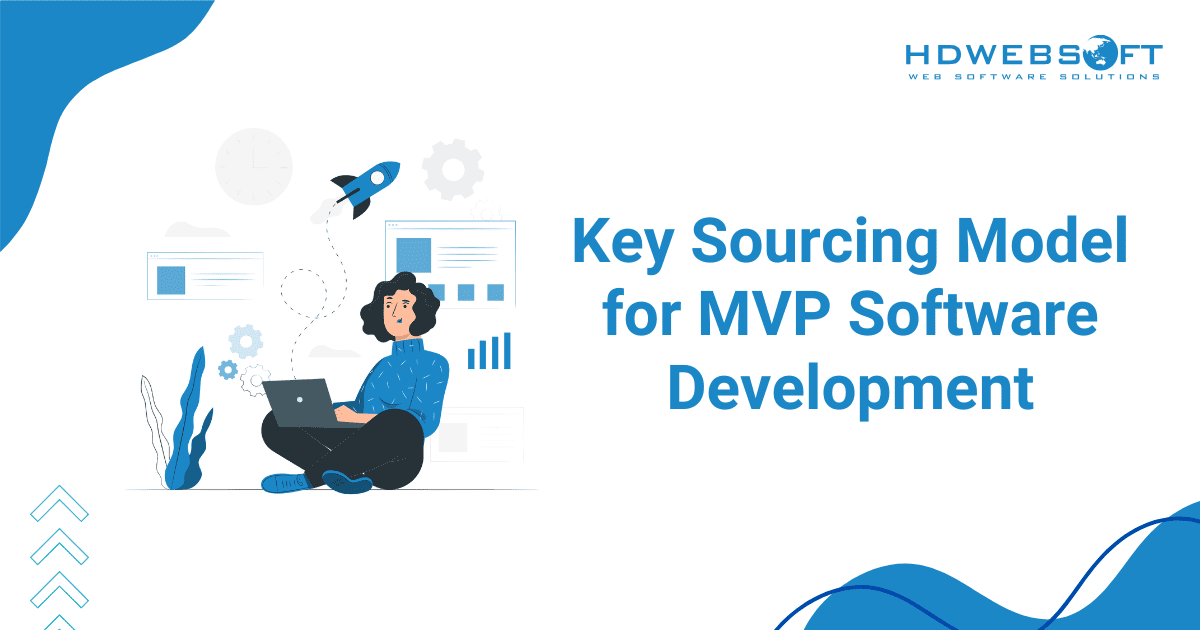
When building a minimum viable product, startups have several options for sourcing their development team. Choosing the right model can make a big difference in how fast and cost-effective you create a functional MVP. Let’s explore the primary sourcing models for MVP development for startups and their unique benefits.
In-House Development
In-house development is an option for startups with strong technical capabilities within their team. This model offers the most control over the development process, as the team is closely aligned with the company’s culture, mission, and goals. Moreover, in-house teams can work collaboratively on MVP software development, making adjustments in real-time without communication lags or misunderstandings.
However, this approach can be costly and time-consuming. Additionally, if extra technical expertise is needed, hiring and onboarding skilled developers requires both time and resources.
According to research, hiring a developer in tech markets can take an average of 36 days. For startups looking to launch quickly, this might not be the most efficient approach. Nevertheless, if the team already has the required skills and resources, in-house development provides a high degree of flexibility and quality control.
Freelancers
Working with freelancers is a popular option for startups that need specific skills on a budget. Freelancers offer flexibility, enabling startups to scale resources up or down based on project needs. The best is this approach gives access to a global talent pool and can be more affordable than hiring full-time employees. This is especially important in the early stages of MVP software development.
Yet, managing freelancers requires careful oversight and clear communication to ensure alignment with the project goals. Freelancers may not be as invested in the company’s mission as full-time employees, which can affect their commitment. For instance, freelancers often work on multiple projects, so timely communication and project management become essential.
A word of advice: platforms like Upwork and Fiverr can provide a marketplace for freelancers. The use of these platforms can streamline the process of finding and vetting skilled developers for your MVP project.
Outsourcing to a Development Agency
Outsourcing to a software development agency is a viable option for startups looking for an end-to-end solution with established processes and expertise. For starters, agencies specializing in developing MVPs for startups bring a structured approach to the development process. They often include project management, quality assurance, and post-launch support.
Outsourcing agencies are ideal for startups with limited in-house technical expertise. This is because they have experienced teams that are familiar with agile methodologies and MVP software development strategies. This model can expedite the development process while ensuring high-quality output, making it a great choice for startups aiming to launch quickly.
While outsourcing can be more expensive than freelancers, it often offers more predictable results and efficiency. Agencies can also provide guidance on MVP best practices and scalability, enabling startups to grow their product effectively over time.
Hybrid Model
The hybrid model combines in-house development with outsourced resources. This approach allows startups to maintain control over core components of the MVP while leveraging external expertise for specific aspects.
For example, the in-house team might handle product design and critical functionalities. Meanwhile, an agency or freelancer develops backend systems or conducts quality testing. This model balances the benefits of in-house control and outsourced expertise, enabling startups to maintain flexibility while managing costs.
A hybrid approach can be especially useful for startups with partially technical teams who need help in certain areas but want to retain ownership of the MVP software development project. However, coordination between teams is essential to prevent miscommunications and delays. The main reason is that each side will have different working methods and communication styles.
How to Develop an MVP for Startup
Developing an MVP is essential for startups looking to validate their idea in the market before committing extensive resources. Here’s a step-by-step guide on how to develop an effective MVP for startups.
Define the Problem and Target Audience
The first step in developing an MVP is clearly defining the problem your product aims to solve. Without a focused problem statement, your MVP risks becoming too broad, leading to unnecessary complexity.
It’s best to outline the specific pain points your solution addresses and identify the core group of users who will benefit the most. Knowing the target audience allows you to tailor the MVP software development to their needs. Accordingly, this will ensure the product is user-centered from the start.

Targeting the right audience for your start-up ideas gives you insights to customize your MVP software development product to market needs.
Prioritize Core Features
Once the problem and audience are defined, it’s crucial to list the essential features that address the primary pain points. This is where MVPs differ from full-scale products; they focus only on what’s necessary to test the core functionality.
For instance, if you’re developing a ride-sharing app, your MVP should focus on essential features like ride requests, driver matching, and payment processing. Additionally, it should omit advanced features such as driver ratings or loyalty rewards.
When prioritizing features, consider techniques like the MoSCoW method. It helps teams categorize features into “Must-have,” “Should-have,” “Could-have,” and “Won’t-have” categories. Owing to them, this approach can be incredibly useful for keeping the MVP lean and functional. Thereby preventing scope creep that could increase costs and delay launch.
Choose the Right Technology Stack
Selecting the technology stack is essential for MVP software development, as it influences speed, cost, and scalability. For a faster turnaround, consider using frameworks like Ruby on Rails or React Native, as they allow for rapid development without compromising quality.
Obviously, many startups choose scalable technologies that can grow with the product. Good technologies are used to ensure a smooth transition as the product evolves from MVP to full version.
In essence, it’s important to balance speed with future scalability here, as switching tech stacks later can be costly. Consulting with a development expert to pick a tech stack that aligns with your goals can save time and resources in the long run.
Develop and Test
With a clear feature set and tech stack, the next step is to build the MVP using agile methodologies. This is due to the method’s priority is iterative development and continuous improvement. Breaking down the development process into sprints and using daily standups can ensure everyone on the team is aligned.
In addition, testing is crucial throughout the development cycle to identify and resolve issues early on. The process makes sure of a smoother user experience upon launch.
In MVP software development, automated and user testing provide critical insights. Automated testing helps streamline code integrity checks, while user testing provides feedback on usability. By collecting user feedback early, you’re better equipped to catch and resolve any gaps in the product.
Launch and Gather Feedback
Once the MVP is ready, launch it to a small group of early adopters who represent your target audience. This controlled release provides real-world insights into how users interact with the product. Furthermore, tools like surveys, interviews, and analytics can help gauge user satisfaction and identify areas for improvement.
With this feedback, you can refine the MVP, enhance features, or even pivot if necessary.
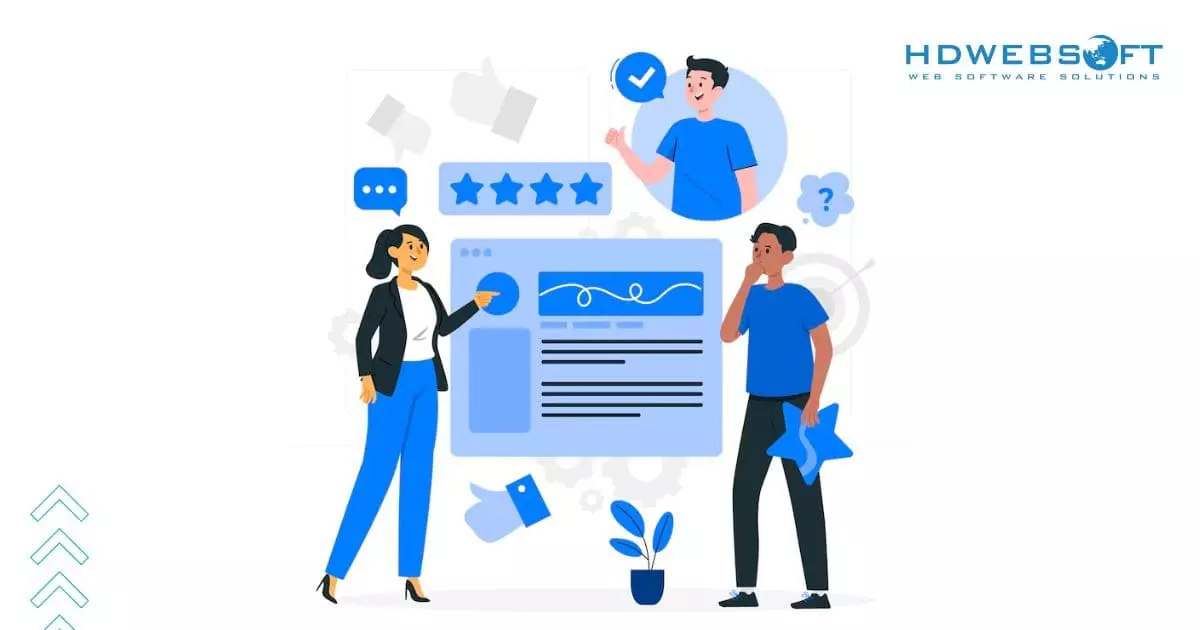
Feedback gathering is especially important for startups considering launching their MVP software development product.
Iterate and Improve
The MVP process doesn’t stop after the initial launch. After analyzing user data and feedback, you can iterate and refine existing features or add new ones as needed.
The continuous improvement cycle is central to MVP software development. It allows you to build a product that adapts to changing user needs and market trends. With each iteration, your MVP inches closer to the full-fledged product, making it more valuable and robust.
Conclusion
Developing an MVP is an essential first step for startups aiming to validate their ideas while minimizing risks. Ultimately, MVP software development not only enables faster time-to-market but also aligns product development with real user needs. As evident, it makes sure of a customer-centric approach from day one.
This lean, adaptable methodology allows startups to make data-driven decisions, securing a more resilient path to success. So, start your journey now to bring your idea to life before anyone else is making revenue from it. HDWEBSOFT is here to listen to your idea and make it come true.




